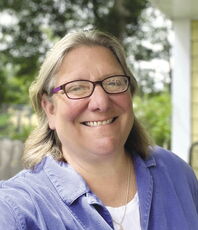
Processing Your Payment
Please do not leave this page until complete. This can take a few moments.
- News
-
Editions
View Digital Editions
Biweekly Issues
- December 1, 2025
- Nov. 17, 2025
- November 03, 2025
- October 20, 2025
- October 6, 2025
- September 22, 2025
- + More
Special Editions
- Lists
- Viewpoints
-
Our Events
Event Info
Award Honorees
- Calendar
- Biz Marketplace
Even as some boomers retire, others are shaping new careers
 Adobe Stock Photo / SakdaSong
The Maine Council on Aging and the Southern Maine Agency on Aging say that recruiting older workers is actually the key to solving workforce shortages across all sectors, especially in nonprofits.
Adobe Stock Photo / SakdaSong
The Maine Council on Aging and the Southern Maine Agency on Aging say that recruiting older workers is actually the key to solving workforce shortages across all sectors, especially in nonprofits.
Maine has the largest population per capita of individuals 65 years and older in the United States, making up 22.5% of the state’s total population according to the U.S. Census Bureau. An aging population and decreasing birth rates are negatively impacting workforces nationwide, but nonprofits are finding inclusive solutions to mitigate shortages.
While retirement is resulting in extensive nonprofit leadership turnover and institutional knowledge being lost, the Maine Council on Aging and the Southern Maine Agency on Aging both believe that recruiting older workers is actually the key to solving workforce shortages across all sectors, especially in nonprofits.
“Ageism is a big deal. It is holding us back. We don’t see older people as our future. But the Making Maine Work Report in 2013 identified putting older workers back to work as the best solution and 10 years later in 2023, the report still said that older workers are probably the best thing we’ve got going. Employers are doing nothing to build this highly functioning, multi-generational workforce,” says Jess Maurer, executive director of the Maine Council on Aging.

Better health practices and technology mean that people in the United States are living longer than ever before. This longevity is turning the traditional idea of retiring in someone’s 60s on its head. Financially, living longer results in more bills having to be covered throughout a person’s life. Additionally, it means that people will still want to be active, career-driven, and find their place in a purposeful work community. Whether full-time, part-time, or through volunteerism, older individuals are filling gaps left by workforce shortages.
According to Maurer, nonprofits are already used to making meaningful impacts on the community despite their tight budgets. The creative problem solving and inclusive nature of nonprofits make the industry perfect to foster this new wave of older workers. In order to be competitive in recruitment, employers are going to have to try innovative work schedules and ideas. “That’s just the reality of it, we are all going to work longer. So, let’s do it differently, right? Let’s have gap years and sabbaticals. There are nonprofits in Maine that are already offering sabbaticals to all employees. This is the key here, that nonprofits have the ability to be flexible and offer flexible work environments in a way that a lot of other businesses can’t. The ones who don’t think they can are not thinking outside of the box, because we’re going to have to be creative, this is the wave of the workforce future.”
Retirements, both forced and voluntary, are causing major shifts in the leaderships of Maine’s nonprofit sector. This results in organizations needing to quickly shift and adapt their already tight workforces to fill the role of a leader. Maurer advises that having a plan is essential to maintaining a calm and unified transition.
“Some of these leaders have been in charge for 15 or 20 years, sometimes longer, so that’s a lot of institutional memory that’s walking out the door and it can be hard to fill the shoes of a nonprofit leader who may have had a hand in creating the nonprofit, it’s been that person’s brainchild and now they’re stepping away. So, succession planning is really an important aspect for nonprofits,” Maurer explained.
While focusing on the workforces of nonprofits and beyond, the Maine Council on Aging is working hard to rework the narrative of aging in the workforce which typically has a negative connotation. By eliminating biases and myths such as older workers being more expensive to hire or not being able to be trained in certain fields, Maurer hopes that all Maine employers will be open to hiring older workers. Currently, 23% of Maine’s population is over 65 meaning that there is a huge, untapped pool of workers who already have career experience, possess developed skillsets, and are ready for a new chapter in their lives.
“I’m really trying to attract everyone into the jobs that we have in Maine. I want to hire the best person, and that person might be 22 or they might be 82, and any Maine employer who isn’t doing the same is missing the boat,” Maurer says.
Megan Walton, CEO of Southern Maine Agency on Aging, echoed Maurer’s sentiments regarding the impact of longevity and the increasing relevance that older workers will have in the future, especially with younger generations having less children to create a future workforce.

Walton believes that instead of pitting younger workers against older workers, employers should see the benefit of seeing a cohesive team built of people with different life experiences and levels of knowledge. The diversity of these backgrounds enriches organizations.
“Today’s young workers are becoming the older workers of tomorrow. I think what we are all trying to do as workers and employers is to build culture and community where people want to stay at work, or maybe find different opportunities at different points in life, and the only way we can do that is if we have really inclusive work practices across nonprofit organizations. This is about seeing the whole person and figuring out how to retain people for a long time in the way that they want to be retained and contribute,” she said.
Federal programs such as the Senior Community Service Employment provide work training for older individuals while also providing financial incentives for employers willing to give work opportunities to older populations.
While the numbers demonstrate a future need to tap into Maine’s older worker population, Walton wants organizations to recognize the gaps that those over the age of 60 are already filling on workforces. This is especially true for older volunteers who provide necessary services at nonprofits simply for the passion of helping others since they do not draw paychecks.
“At my agency alone, we have over 400 volunteers, the majority are over the age of 60, and these are volunteers really do incredible direct service work with older adults in our community. The Agencies on Aging statewide have over 1,450 volunteers that we oversee collectively. People really want to give back. People really want to take care of their neighbors. People really want to keep an eye on individuals in their own community and make sure they get what they need. So, while we have this serious labor shortage, I think we also have some really unique cultural elements of Maine that set us up well to address the challenges that are coming our way.”
Mainebiz web partners
Related Content

The Giving Guide
The Giving Guide helps nonprofits have the opportunity to showcase and differentiate their organizations so that businesses better understand how they can contribute to a nonprofit’s mission and work.
Learn More
Work for ME
Work for ME is a workforce development tool to help Maine’s employers target Maine’s emerging workforce. Work for ME highlights each industry, its impact on Maine’s economy, the jobs available to entry-level workers, the training and education needed to get a career started.
Learn More
Groundbreaking Maine
Whether you’re a developer, financer, architect, or industry enthusiast, Groundbreaking Maine is crafted to be your go-to source for valuable insights in Maine’s real estate and construction community.
Learn more-
The Giving Guide
The Giving Guide helps nonprofits have the opportunity to showcase and differentiate their organizations so that businesses better understand how they can contribute to a nonprofit’s mission and work.
-
Work for ME
Work for ME is a workforce development tool to help Maine’s employers target Maine’s emerging workforce. Work for ME highlights each industry, its impact on Maine’s economy, the jobs available to entry-level workers, the training and education needed to get a career started.
-
Groundbreaking Maine
Whether you’re a developer, financer, architect, or industry enthusiast, Groundbreaking Maine is crafted to be your go-to source for valuable insights in Maine’s real estate and construction community.
ABOUT
NEW ENGLAND BUSINESS MEDIA SITES
No articles left
Get access now
In order to use this feature, we need some information from you. You can also login or register for a free account.
By clicking submit you are agreeing to our cookie usage and Privacy Policy
Already have an account? Login
Already have an account? Login
Want to create an account? Register
Get access now
In order to use this feature, we need some information from you. You can also login or register for a free account.
By clicking submit you are agreeing to our cookie usage and Privacy Policy
Already have an account? Login
Already have an account? Login
Want to create an account? Register











0 Comments